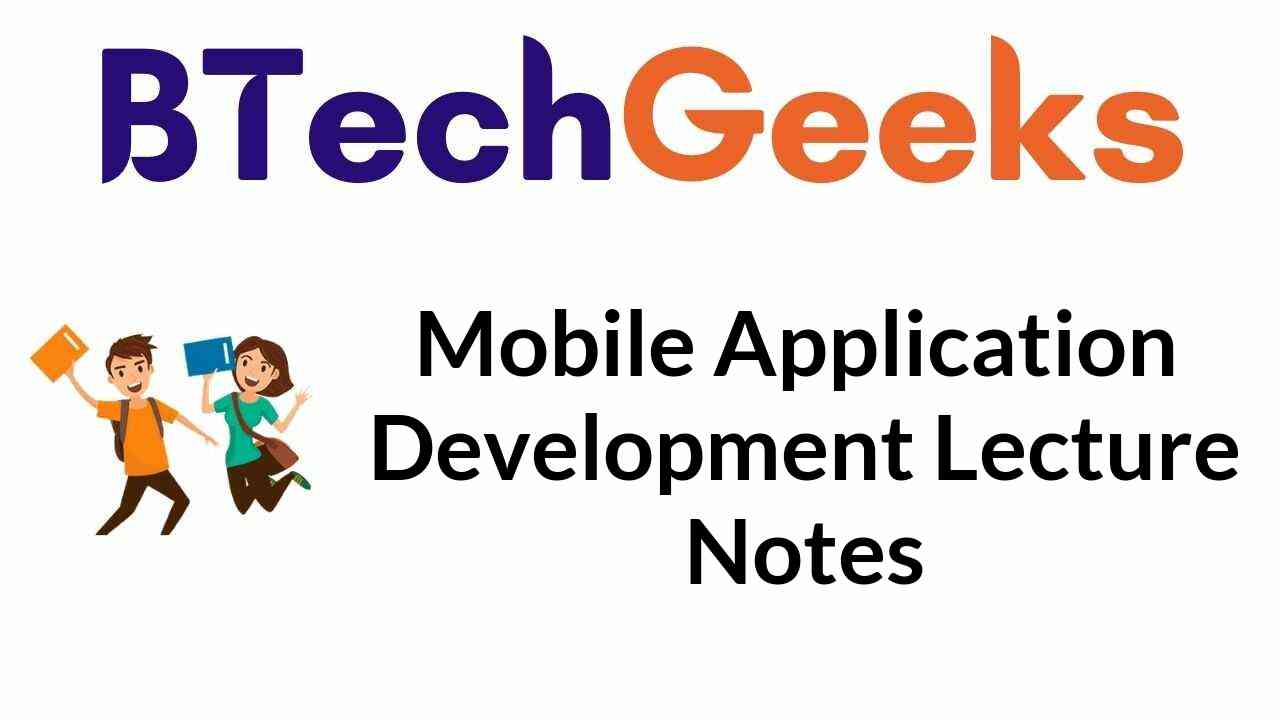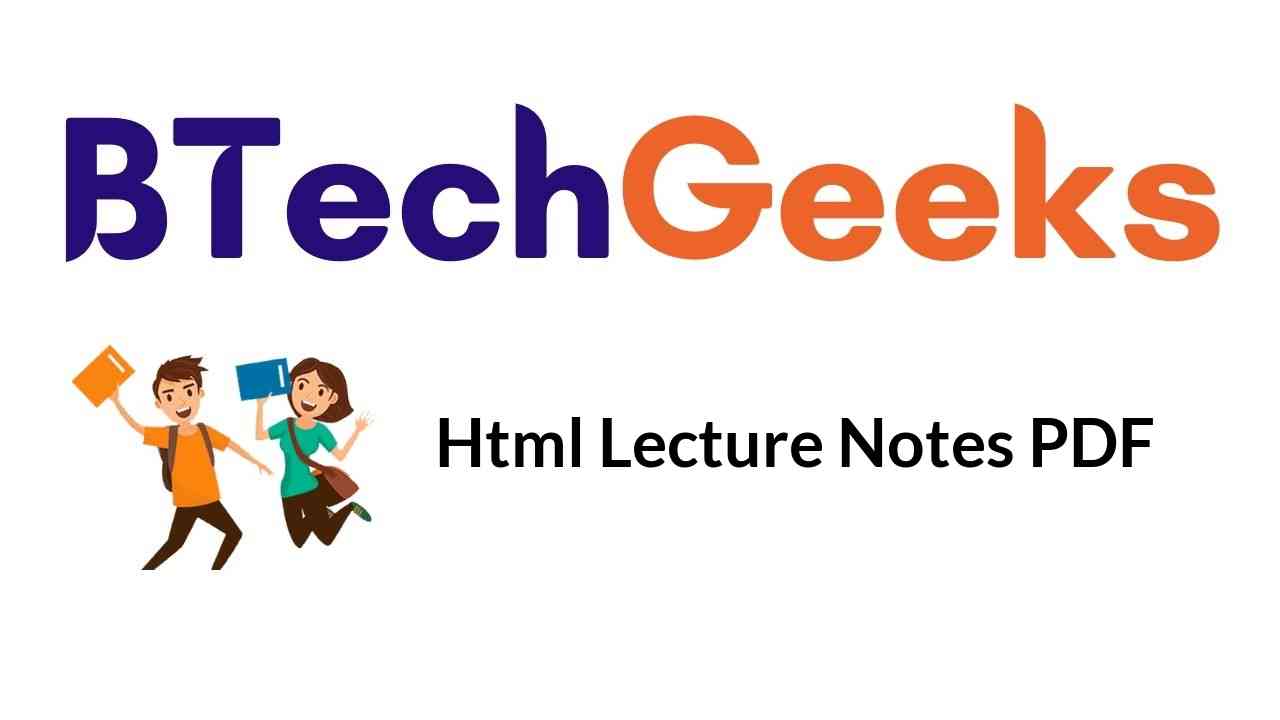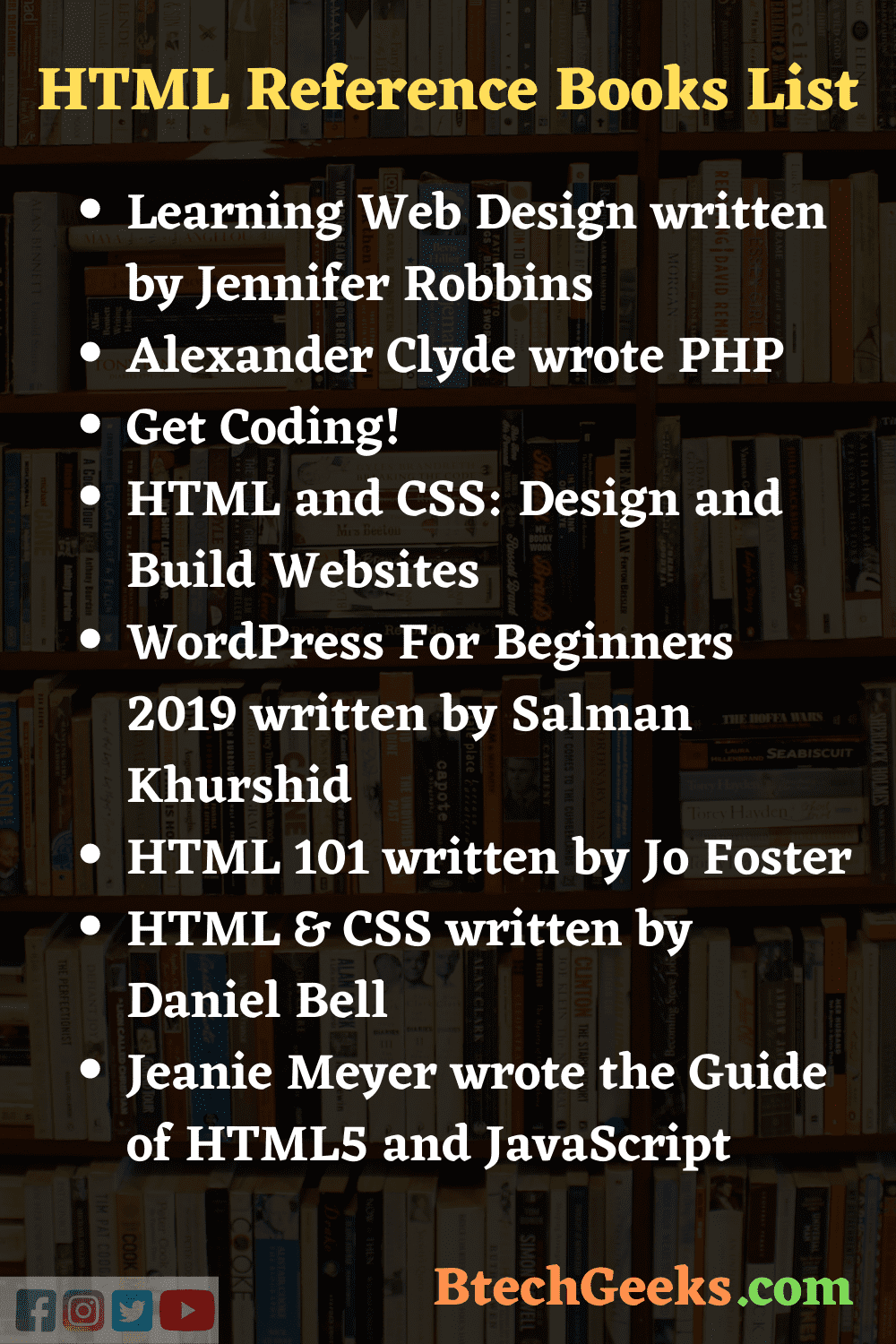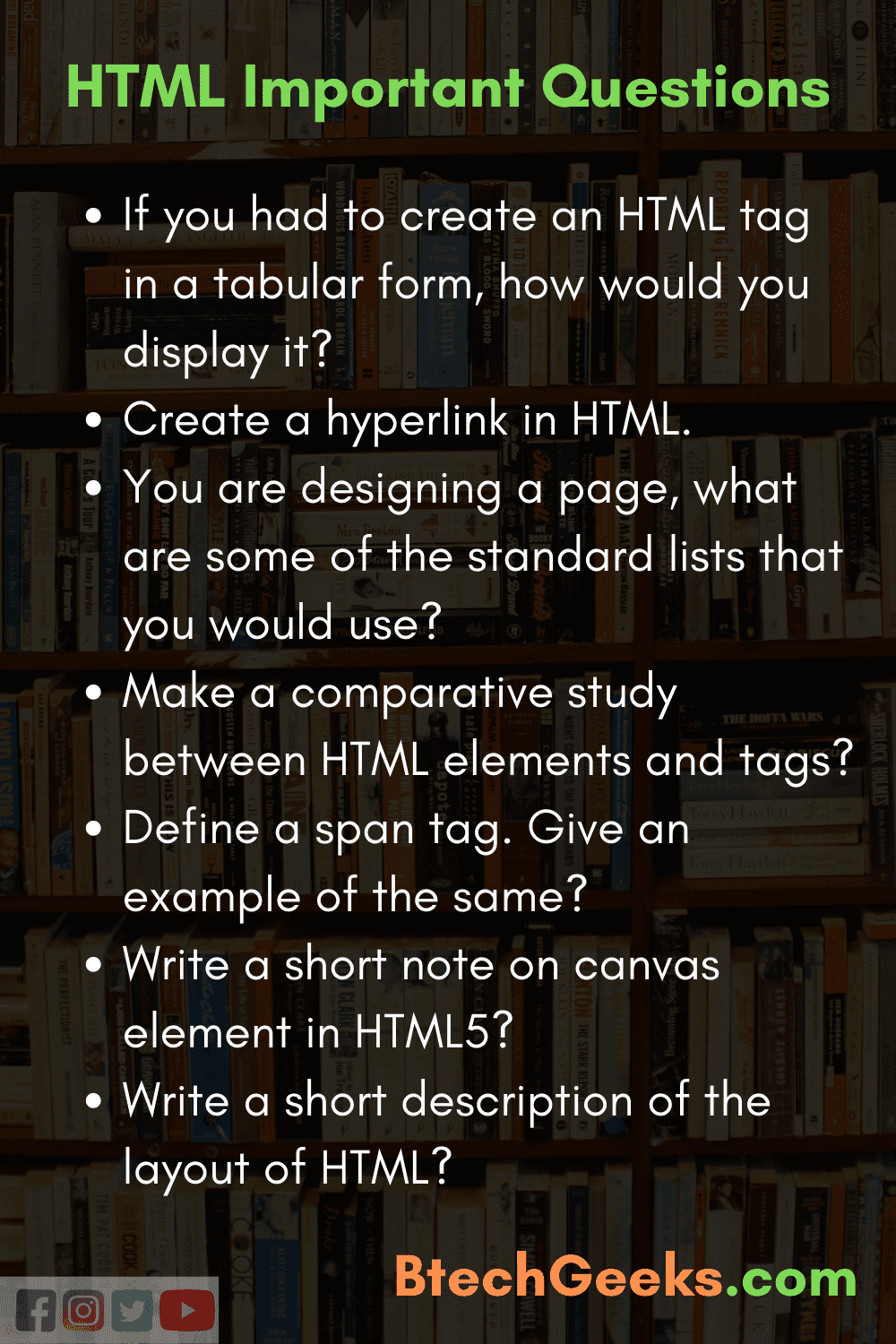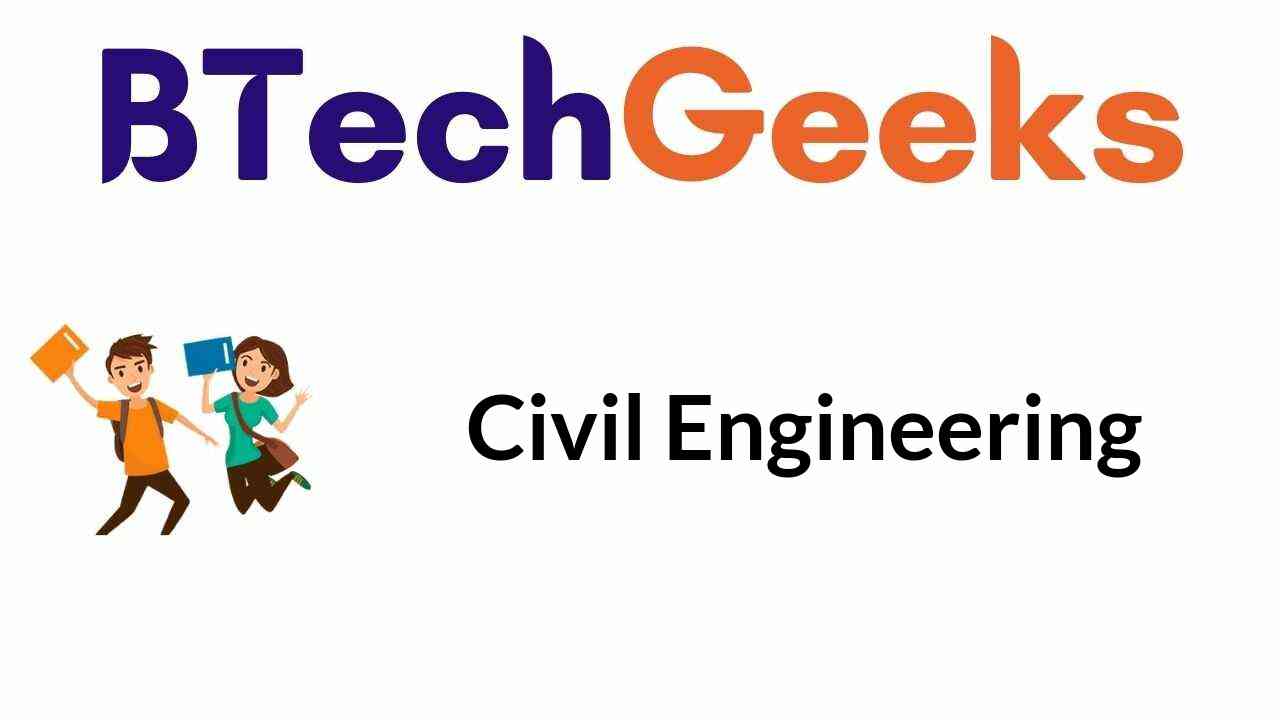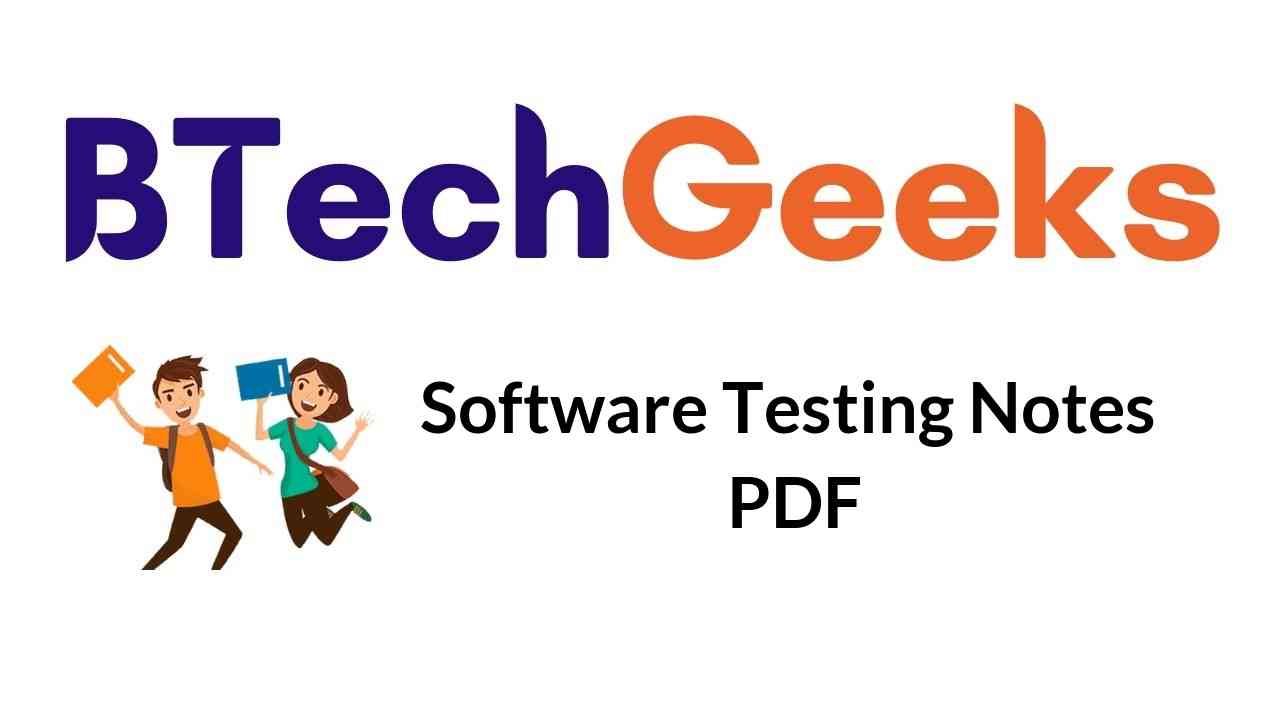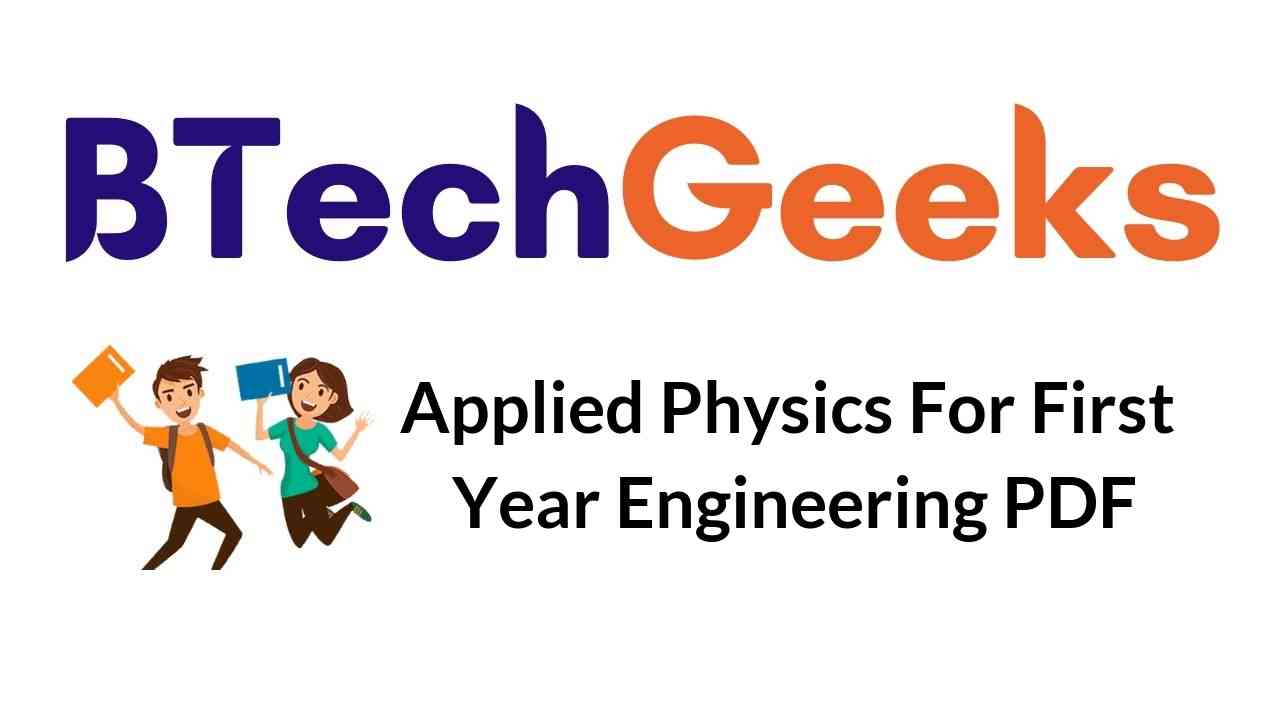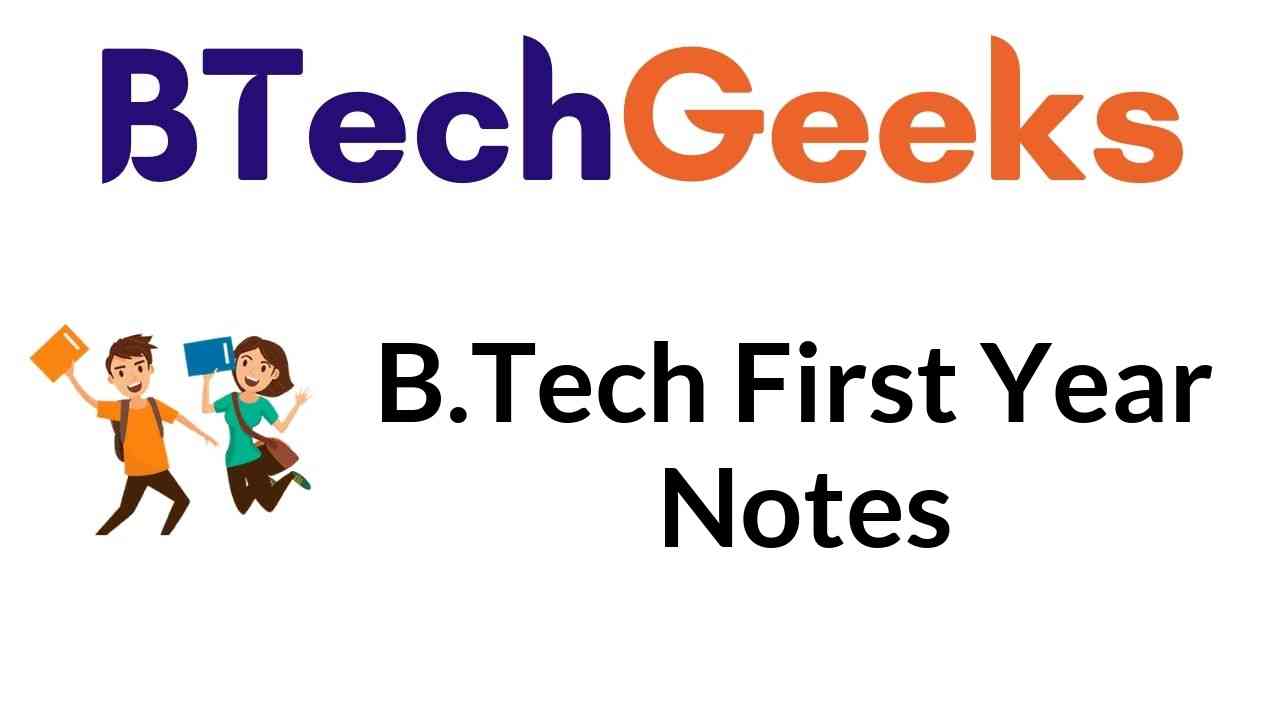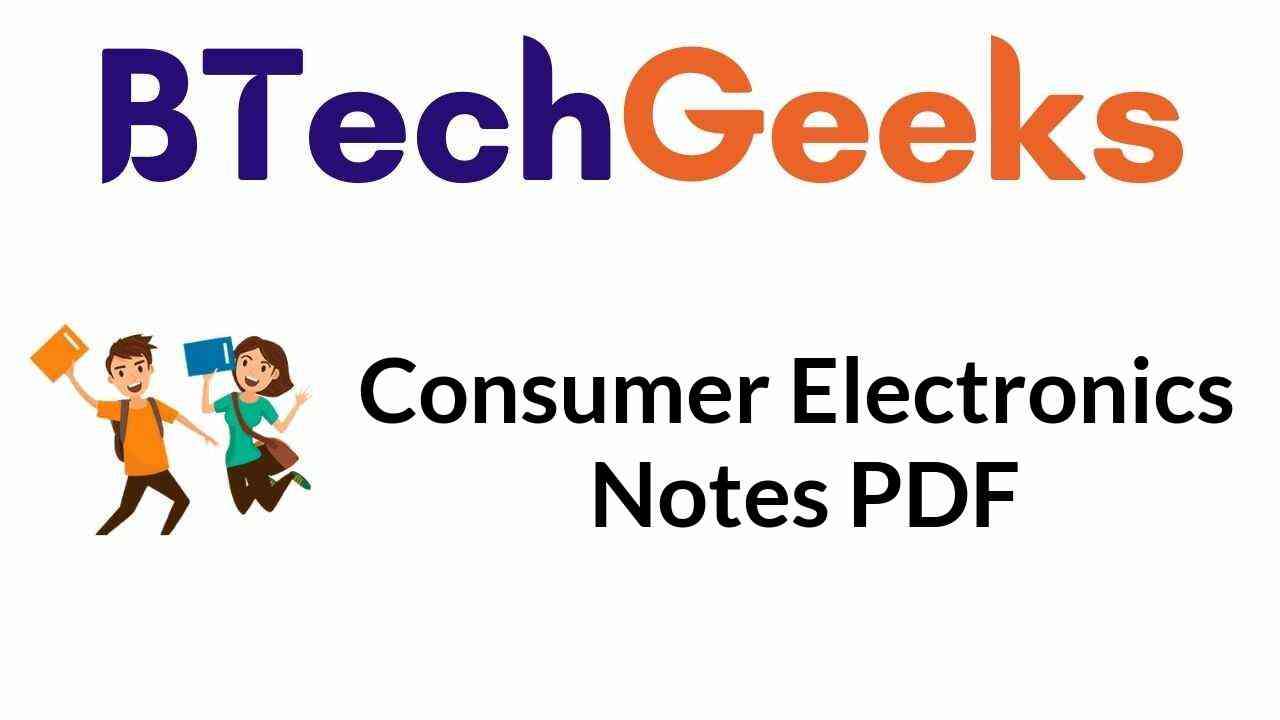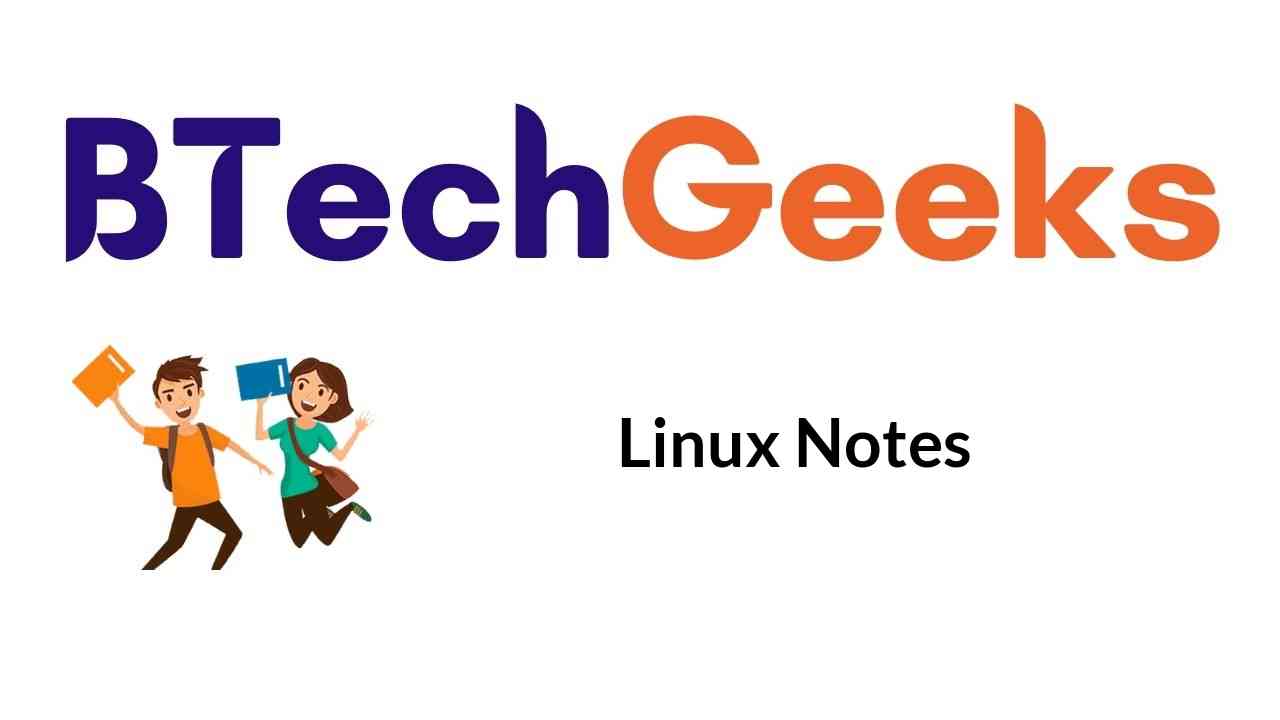Mobile Application Development Lecture Notes PDF: Mobile Application Development course is the demand for my future career. Mobile app creation is expanding at a very fast rate. Students who have enrolled themselves in Mobile Application Development courses have a bright future if they study from authentic lecture notes PDF, study materials, question papers, and reference books. Students can refer to the Big Data Lecture Notes For CSE as per the latest and updated syllabus from this article.
Students worried about how to tackle Mobile Application Development courses should take a look at our Mobile Application Development Lecture Notes PDF. Moreover, we have provided the students with all the information they need to score better grades. Here, students will find exam preparation study materials to enhance their performance. Students will be able to save their time in hunting for the best digital notes on mobile applications when they refer to our website. Furthermore, we have provided students with the latest curriculum to brief them about the Mobile Application Development Courses.
- Introduction to Mobile Application Development
- Mobile Application Development Lecture Notes PDF
- Best App Development Books
- Mobile Application Development Course Syllabus PDF
- List of Mobile Application Development Important Questions
- FAQs on Mobile Application Development Lecture Notes PDF
- Conclusion
Introduction to Mobile Application Development
Mobile application development pdf: Mobile Application Development is a branch of software development. Engineering and Computer Science students have Mobile Application Development in their second semester. The Mobile Application Development course acquaints students with the working knowledge of Android Studio Development Kit (SDK) or Android Studio Development Tool. The students learn the concept of mobile programming and designing with various tools and platforms.
Students need to create mobile compatible software applications that typically run on various platforms, such as iOS, Android, etc. Furthermore, the Mobile Application Development course entails writing applications on wireless computing platforms. Students can develop Mobile Applications once they have learnt programming languages, such as C, C++, C#, Java, Python, etc. They can use the most suitable programming language inside a mobile development environment.
Mobile Application Development has a wide periphery that requires different approaches to build mobile applications. These approaches are Native Mobile Applications, Cross-Platform Native Mobile Applications, Hybrid Mobile Applications, and Progressive Web Applications. The students should be conversant with them, along with other computing resources and native features.
Mobile Application Development Lecture Notes PDF and Study Material PDF Free Download
Mobile Application Development + Lecture notes pdf course familiarizes students through the entire development life-cycle, beginning from the inception. They are exposed through the developmental, analytical, and implementation processes. The final stage is the testing and releasing of the application. While developing the mobile application, the developer also needs to keep in mind the needs of the end-users.
Thus, it would be helpful if students acquire an in-depth knowledge of Mobile Application Development. Our Lecture Notes for Mobile Application Development is designed to facilitate the students in attaining their desired results.
Students can have a better command over the subject if they go through the following and develop their knowledge in the Mobile Application Development’s field.
- Mobile Application Development Notes for MCA and BCA students
- PG Diploma, Diploma, and Vocational Mobile Application Development Notes and Study Material PDF Free Download
- Mobile Application Development Lecture Notes PPT
- Mobile Application Development Notes for Bca and Mca students
- PG Diploma, Diploma, and Vocational Mobile Application Development Notes and Study Material PDF Free Download
- Mobile Application Development Lecture Using Android Lecture Notes PPT
- Android Application Development Notes PDF
- Mobile application development notes pdf
- Introduction to Mobile Application Development PPT
- Mobile application development notes pdf diploma
- mobile application development r18 notes
- Mobile application development pdf notes download
- Mobile application development syllabus
- Mobile application development pdf notes
- Mobile application development btech notes
Best App Development Books for Reference
When you have the Best App Development Books for reference in your hands, you can consider half of your problem withering away. Our list of Mobile App Development Books not only helps you prepare for your upcoming exam but gives you a substantial thrust in making you one of the leading Mobile App Developers.
You can follow the given list of books for App Development that assures you of meeting your needs and provides you with the knowledge you need according to your Mobile Application Development Course Syllabus.
- Android Wireless Application Development (The Second Edition) by Lauren Darcey and Shane Conder (Pearson Education Publication)
- Professional Android 2 Application Development by Reto Meier (Wiley India Pvt. Ltd. Publication)
- Beginning Android by Mark L. Murphy (Wiley India Pvt. Ltd. Publication)
- Android Applications Development All-in-One for Dummies (The First Edition) by Barry Burd
- Android Programming for Beginners by John Horton (Packt Publishing Limited)
- Android Programming Pushing the Limits by Erik Hellman (Wiley India Pvt. Ltd. Publication)
- Android Programming (The Third Edition) by Bill Phillips, Chris Stewart, and Kristin Marsicano (Big Nerd Ranch Guides Publication)
- Head First Android Development: A brain-friendly Guide by Dawn Griffiths and David Griffiths (Shroff/O’Reilly Publication)

Mobile Application Development Course Syllabus
The Mobile Application Development Course syllabus is a highlight of what students will learn during the duration of the programme. Our latest Mobile Application Development Course syllabus maps out the learning outcome and facilitates students in planning out their study schedules. Android is the main component of the Mobile Application Development Course syllabus.
The updated version of the unit-wise layout of the Mobile Application Development Course Syllabus will help students to prepare effectively for their second-semester exam. Here, we have chalked out clear course content.
| Unit | Topic | Sub-Topic |
| I | Introduction to Android |
|
| II | Android Application Design Essentials |
|
| III | Android User Interface Design Essentials |
|
| IV | Testing Android Applications |
|
| V | Common Android Application Programming Interfaces |
|
List of Mobile Application Development Important Questions
Based on the above-given syllabus, students can attempt assignments and prepare for their exams. Candidates pursuing Computer Science or Engineering with Mobile Application Development as their course content should study from the list of the best books, study materials, Mobile Application Development Lecture Notes PDF, and reference notes. Once they are satisfied with their preparation, they can attempt the following essential questions to test their knowledge.
The following essential questions are parameters to evaluate students’ preparation. Students can refer to these vital questions before the exam for revision purposes.
- Describe the layered architecture of an Android Operating system.
- Is it possible to prevent the WebView from Invoking the device’s web browser during redirection in the Webview? Explain each process with an example.
- What is the code for receiving and passing data using Intent in Android Application?
- Which is the better JSON or XML web service? Justify your answer with a code explanation.
- Explain the objective of Mobile Application Development.
- Explain the purpose of the User Interface.
- Elaborate on the elements of Mobile Application Development.
- Discuss the ways you can acquire the path for an Android device’s external storage.
- Illustrate the Application preference while using an Android Activity.
- What are the various ways to persist data in Android?
- What is the Android Manifest File’s role in Android Application Development?
- Discuss the benefits of Intents.
- Explain the role of Eclipse Installation.
- Define Deployment with examples.
- Discuss the User Interface Screen characteristics.
- Give an account of Android Studio Development Kit.
- What are the various Android Platforms?
- Can you receive and send SMS from within your application without the usage of built-in SMS Android Application? Justify your answer with the help of a program.
- List the layout views available for Android Application Design. Design any two layout views in your application and mention its usage.
- What are the tools needed to develop a Mobile Application?
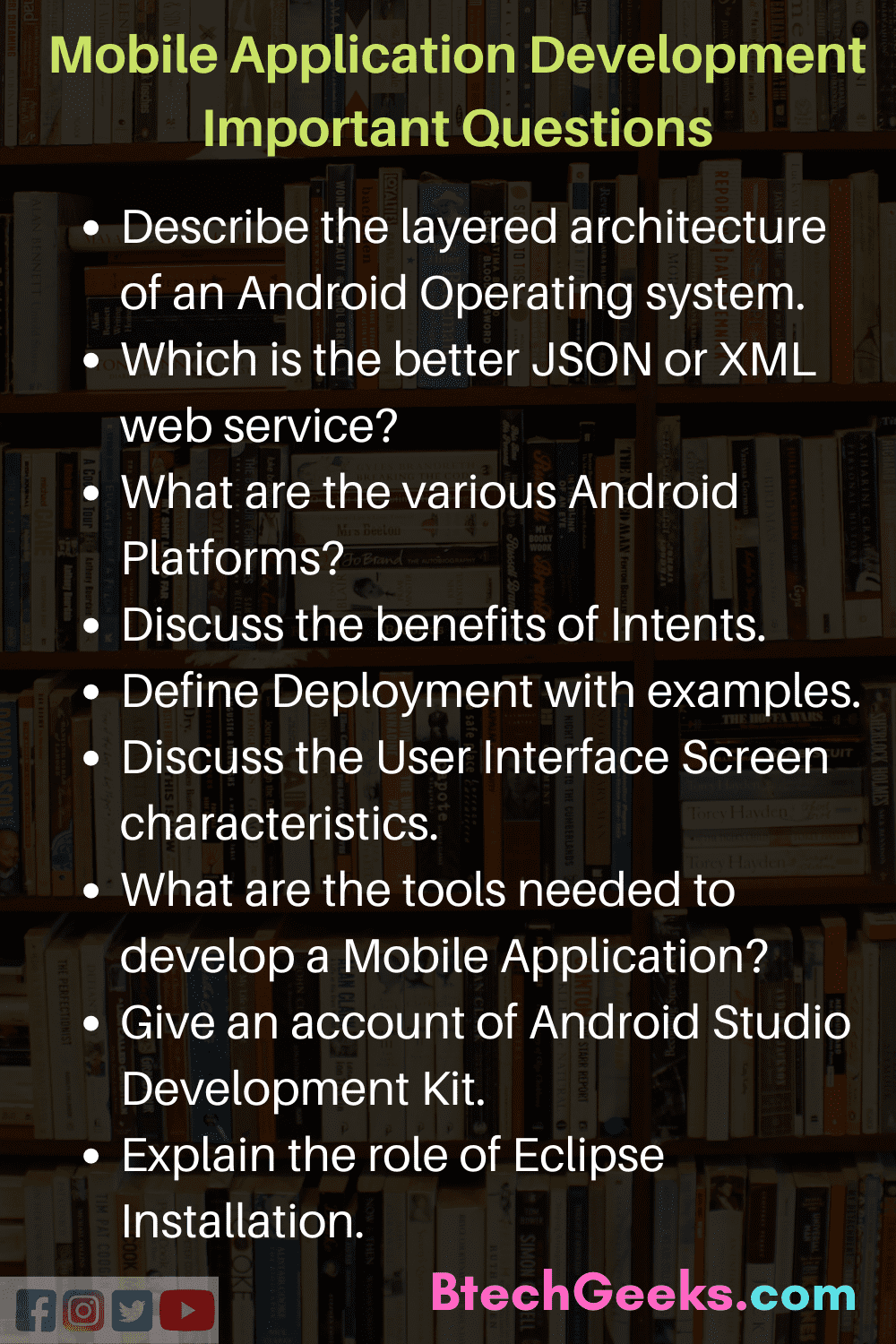
Recommended Reading On: Cellular Mobile Communication Notes
FAQ’s on Mobile Application Development Lecture Notes
Question 1. What is Mobile Application Development?
Answer: With the advent of smartphones, iOS, etc. Computer Engineers and Mobile App Developers are evolving mobile apps, which are published on Google Play or Apple App Stores. These apps promote eCommerce, social networks, and mobile games. Mobile Application Development is catching on for its user-friendly features and portability.
The developer needs to design an app with the help of programming language and coding. The developer then enhances the app after thorough analysis and testing. Finally, the app is launched for public use. Mobile Application Development is specialised scientific knowledge of teamwork that takes one year or more for the final product. And mobile application development mca, bca.
Question 2. Name a few of the best and recommended books for Mobile Application Development courses?
Answer: Esteemed professors in the department of Mobile Application Development recommend the following books to Computer Science and Engineering students for easy understanding.
- Android Wireless Application Development by Lauren Darcey
- Professional Android 2 Application Development by Reto Meier
- Beginning Android by Mark L. Murphy
Question 3. What is the prospect of studying the Mobile Application Development course programme?
Answer: Smartphones with apps are dominating the world. The growing trend of app usage on mobile platforms is gaining momentum. It is extensively catering to individual needs and helping businesses to flourish. The daily dependence on mobile applications is growing as they are contributing to an easy lifestyle. Thus, Mobile Application Development is here to stay and offers a lucrative career path to aspirants.
Question 4. List a few of the essential questions for the Mobile Application Development course programme.
Answer: Essential questions are helpful tools in enhancing students’ exam preparation. Students can test their knowledge of Mobile Application Development. We advise students to do all the questions after they finish studying Mobile Application Development Lecture Notes PDF.
Question 5. What are the tools needed to develop a Mobile Application?
Answer:
- Explain the objective of Mobile Application Development.
- Explain the purpose of the User Interface.
- Elaborate on the characteristics of Mobile Application Development.
Conclusion
The information provided here on Mobile Application Development is dependable. Students can raise their ability by studying from Mobile Application Development Lecture Notes PDF. It familiarises students through the entire concept of Mobile Application Development and provides useful information for better exam preparation.

